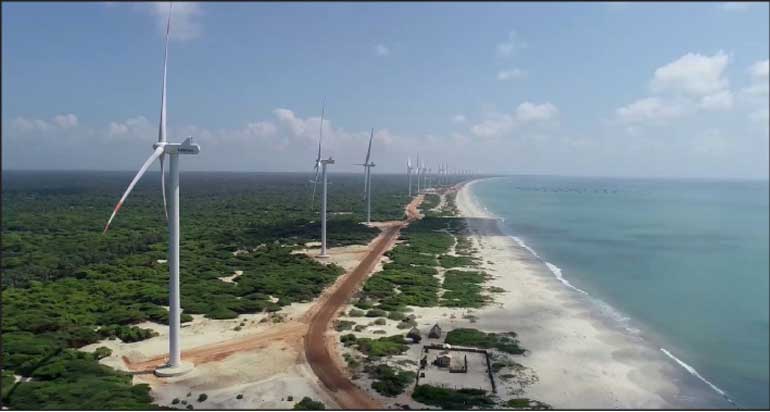Fishermen against the expansion of wind farms on Mannar Island
According to residents, who protested against the first phase of the project in 2020, more turbines will drive away the fish and destroy their livelihoods. The new phase is managed by a company owned by Indian tycoon Adani. Experts fear the consequences will also be disastrous for migratory birds that cross the island.
Colombo (AsiaNews) – The expansion of a wind farm on Sri Lanka’s Mannar Island could have disastrous effects on the local environment and fishing communities.
Thousands of migratory birds, especially those moving from the Arctic and those that migrate through the Indus Valley, cross the island every year and are in danger of disappearing.
Sri Lanka's largest wind farm was built along their route in 2020, this despite protests from fishermen and residents, who were still unaware that the project would change the local landscape and their livelihoods.
Now locals are once again angered by the proposed addition of more wind turbines.
The Thambapavani wind farm, located on Mannar Island, is operated by the Ceylon Electricity Board (CEB).
The government is determined to proceed with the second phase of the project, which is managed by India Adani Green Energy Sri Lanka Limited (AGESL).
Adani intends to build 52 turbines of 5.2 MW each in a region located between the Adams Bridge Marine National Park and the Vankalai Ramsar Wetland, also a protected area.
According to an Environmental Impact Assessment report, there is “growing concern from some fishermen that noise generated from wind turbines would scare the nearshore fish away and the fish catch of the artisanal fishers would be hampered.”
Arjun Selvarajah, 45, Sepamalai Ravichandrarajah, 52, and Nadarajah Pathmanathan, 56, are from Thalvupadu, a coastal village where the existing wind farm is located.
“[W]ith the proposed extension of the wind farm project, more wind turbines are planned in the island and coastal areas. Before the wind farm was established, we could engage in fishing near the coastal stretch within two kilometres, but all fish species have disappeared due to sound and vibration from the wind farm,” they told AsiaNews.
“Nowadays, we need to go about 16–18 kilometres in the sea as there are no fish banks near the coastal waters. We cannot go far due to fear of being arrested by the Indian Coast Guard for entering Indian territorial waters. Many fishermen engage in different seasonal fishing methods throughout the year. Yet, we have only this sea for our survival.”
Although the government has assured that compensation and alternatives would be provided, fishermen and local residents view the latter as “false promises".
The turbines are also expected to have an impact on birds.
Some “15 million birds migrate to Sri Lanka every year and the Mannar Island is one of the primary entry points for these migratory birds,” said Prof Sampath S. Seneviratne of the Department of Zoology and Environment Sciences of University of Colombo.
“Birds tend to avoid flying long distances over water due to lack of emergency landing areas and prefer to adhere to land masses, whenever possible,” he explained.
“The proposed wind farm could lead to disastrous consequences for birds as each tower is 120 metres tall and the rotor blades measure 96 metres in length,” the expert added. “Mannar Island is home to 30 per cent of the country’s birds, and the region generally harbours over 200,000 water birds during the migratory season”.







.png)










